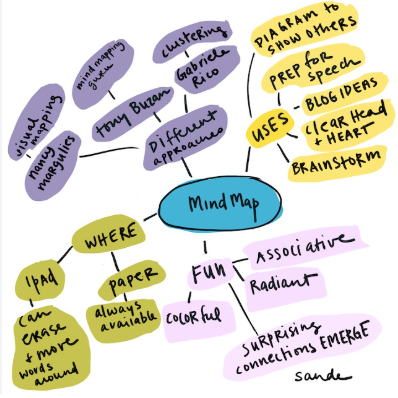Content creation is the building rock of academic and professional success. Whether you are creating a compelling research paper, developing an innovative business plan, or even just participating in a conference discussion, the ability to create attention-grabbing and relevant ideas is monumental. At university level, academic writing demands clear, well-supported arguments and mainly original insights, but it is a question of where these ideas come from, and how we organize them into a coherent structure.
This blog post will walk you through powerful techniques, brainstorming and clustering, which are not just buzzwords but structured strategies to pave the path of your creative potential and transform those daunting blank pages into canvases brimming with possibilities. These pre-writing techniques can substantially help writers, expert or student, generate ideas, explore connections, and develop a strong foundation for academic papers.
Brainstorming versus Clustering
Brainstorming is a technique used to generate a large number of ideas in a short period of time. The goal is to create a free-flowing environment where you can explore different perspectives and possibilities without judgment or self-censorship. In other words, it is about letting your mind wander, making unexpected connections, and building upon the ideas of others (Lima, 2020). In the context of academic writing, brainstorming can help writers identify potential research topics, develop arguments, and explore different angles on a subject, and thus it is more about quantity over quality at this stage; the more ideas you generate, the more likely you are to stumble upon something truly valuable.


Clustering, on the other hand, is a more visual and organic strategy. It is another pre-writing technique for organizing ideas and exploring the relationships between them. It involves mapping out ideas and establishing relationships, allowing writers to see the connections between different concepts and identify potential themes or patterns. Unlike brainstorming, which focuses on generating a large number of ideas, clustering focuses on connecting those ideas in a meaningful way. It is a great way to move from a jumble of thoughts to a coherent structure. Imagine it as creating a mind-map of your thoughts, helping you to synthesize information in a way that sparks new insights (Raines, 2024).
Common Practices
To pre-write effectively, it is preferable to be aware of some common brainstorming practices, which can be used to push ahead your thinking process. First, free-write all that comes into your mind. Freewriting involves jotting down ideas continuously for a set period of time, without stopping to censor your thoughts. The aim is to get your ideas down on paper as quickly as possible, without worrying about grammar, spelling, or coherence. Just let your thoughts flow freely.
Then, list these ideas. Create a list of thoughts related to your topic. You can start with a broad topic and then narrow it down by adding more specific subtopics and keywords. Listing is a great way to identify potential areas for further exploration. Asking yourself a series of questions about your topic is another crucial practice. Questioning can help you reveal new perspectives and insights. Consider using the “5 question words” to guide your questioning.


In the same way, developing extended clusters can go further with the following strategies. Once writers have generated their list of ideas through brainstorming, they can use outlining to organize them into categories and subcategories. It is then time to establish relationships and connections through idea webs. The latter involves writing down your main topic in the centre of a page and then drawing lines to connect it to related ideas. As you add more ideas, you can create a web of connections that shows how different concepts are related to each other.
Concept mapping is another clustering technique, which is more structured. This often involves identifying key concepts and then arranging them in a hierarchical structure. Writers can use boxes or circles to represent the concepts and then draw arrows to show the relationships between them. Concept mapping is particularly useful for complex topics with many interconnected ideas.
Behind Brainstorming & Clustering
True that brainstorming and clustering have different strategies aiming at different endings or uses, but they both serve writing considerably. They both help writers overcome writer’s block through their free flowing of new and original ideas. By visually mapping out ideas, writers can see the relationships between different concepts and identify potential areas for further research. As far as coherence is concerned, brainstorming and clustering can in different ways help writers structure their ideas into a logical framework. Additionally, and through exploring different perspectives and possibilities, writers can develop stronger and more nuanced arguments. As for clarity, both techniques can help writers vividly describe or explain their thinking and communicate their ideas more appropriately (Clark, 2011).
Overall, brainstorming and clustering are indispensable tools for any university student setting upon academic writing. They provide structured methods to idea generation and organization, helping writers, in general, move from initial concepts to well-developed arguments. Without any doubt, mastering these pre-writing techniques means uncovering creative potential, improving clarity, and ultimately producing quality academic pieces.
References:
Clark, L. (2011). Concepts In Composition: Theory And Practice in the Teaching of Writing. United Kingdom: Taylor & Francis.
Joey Raines. (2024). How to write Your First Book: Turn Any Idea into a Manuscript. Joey Raines
Lima, P. (2020). How to write Anything. United Kingdom.